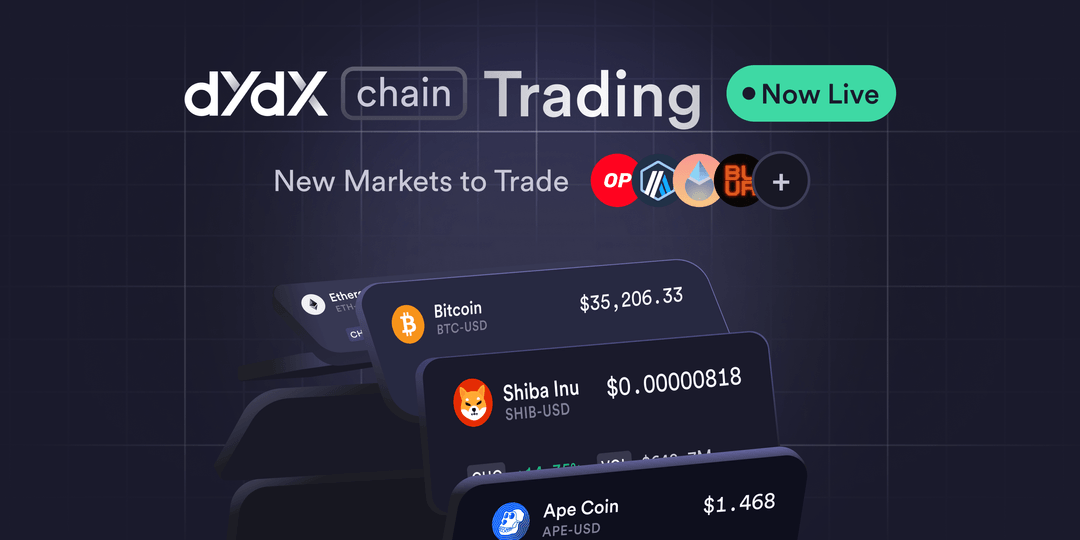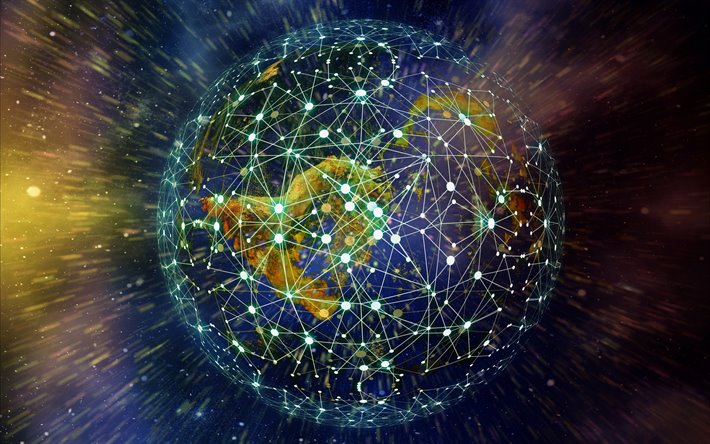
Today’s traditional blockchains often face efficiency problems, but a new solution has quietly emerged—Quai Network. Quai Network not only solves blockchain speed issues but also attempts to create an entirely new cryptocurrency system through its unique dual-token approach. Interestingly, it originated from a simple hardware wallet project yet gradually evolved into a highly regarded blockchain platform. This article will unveil the mysteries of Quai Network, explain why it has attracted major investment institutions, and explore what changes it could bring to the cryptocurrency market.
What is Quai Network?
Quai Network is an innovative Layer-1 blockchain platform that not only aims to solve core issues in existing blockchain systems but is also dedicated to creating a new global monetary system.
What’s most striking about Quai Network is its multi-chain architecture design, which allows multiple blockchains to operate simultaneously—like turning a busy highway into multiple parallel lanes, greatly enhancing network processing capacity. It also employs a unique “Proof of Minimum Entropy” (PoEM) mechanism that ensures security while providing faster transaction speeds, enabling up to 50,000 transactions per second.
Quai Network has designed two tokens: a network utility token—Quai, and an energy-pegged stablecoin—Qi. This unique dual-token system, combined with full compatibility with the Ethereum Virtual Machine (EVM), allows Quai Network to support efficient value transfer and easily organize various decentralized applications.
What’s the Difference Between Quai and Qi?
Quai and Qi are like “gold” and “dollars” in this ecosystem, each playing different but equally important roles.
Features of the Quai Token
Quai is an EVM-compatible deflationary token with these main characteristics:
- Can serve as a store of value tool on the network
- Price fluctuates according to market supply and demand
- Demand may increase as platform usage grows
- Influenced by market speculation and the overall cryptocurrency environment
Features of the Qi Token
Qi is completely different—it’s a stablecoin pegged to energy prices:
- Value is tied to energy costs, not to fiat currencies
- Has privacy features similar to cash
- Serves as the unit of account and medium of exchange in the ecosystem
- Has lower volatility, making it suitable for daily transactions
These two tokens create a complete decentralized monetary system for Quai Network, fulfilling the three major properties of “store of value, unit of account, and medium of exchange.”
The Development History of Quai Network
Quai Network’s birth actually originated from a hardware wallet project, with the story beginning in 2018. Karl Kreder, who was working at GridPlus, a hardware wallet startup, conceived an idea. He proposed a concept of protecting PoW (Proof of Work) blockchain hierarchical structures through merged mining, which later became an important research paper.
In 2019, the project received funding from the National Science Foundation of the United States. Kreder brought this idea to The University of Texas at Austin, collaborating with Sriram Vishwanath, a professor of electrical and computer engineering. They formed a research team that included Alan Orwick, who later became a co-founder.
The team’s efforts quickly yielded results. They successfully launched the “Stone Age,” “Bronze Age,” and “Golden Age” testnets. The Bronze Age testnet was particularly successful, generating over 1.5 million blocks, completing 100,000 transactions, and involving 1,700 nodes globally.
2022 was a pivotal year for Quai Network, as the project received $8 million in investment from Polychain Capital and $2 million from Alumni Ventures, allowing the team to fully commit to project development. By 2024, they raised an additional $5 million in strategic financing, establishing a foundation for further development.
How Does Quai Network Work?
Quai Network’s ability to guarantee both high efficiency and security is thanks to its unique operational mechanisms. Let’s understand them step by step:
1. Multi-chain Blockchain Architecture
If traditional blockchains are like single-lane roads, then Quai Network is like a multi-lane highway. It divides the entire ecosystem into multiple interconnected blockchains (called execution shards), where each chain can process transactions independently while maintaining connectivity with others. This design allows the entire network to process large volumes of transactions in parallel, naturally increasing efficiency.
2. Merged Mining System
In traditional blockchains, miners can only mine on one chain at a time. But in Quai Network, miners can simultaneously mine on multiple chains without additional resource investment—like getting multiple incomes from a single job, which increases miners’ returns.
3. PoEM Consensus Mechanism
Quai Network employs a consensus mechanism called “Proof of Minimum Entropy” (PoEM), which is special because:
- Fast confirmation: Transactions can be quickly confirmed
- Security: Maintains the security of PoW
- Decentralization: Prevents mining power from becoming too concentrated
What Features Does Quai Network Have?
Quai Network possesses a series of innovative features, including:
1. Multi-chain Architecture
Traditional blockchains can only process a limited number of transactions per second, while Quai Network uses parallel processing across multiple chains, enabling the network to handle over 50,000 transactions per second.
2. Unique PoW System
Quai Network introduced a Workshares mechanism that allows small miners to participate in mining. This doesn’t require expensive hardware equipment and doesn’t consume excessive energy, making mining more accessible and environmentally friendly.
3. Ethereum Compatibility
Full compatibility with the Ethereum Virtual Machine (EVM) means applications on Ethereum can be directly migrated to run on Quai Network, providing great convenience for developers.
4. Dual-token Advantage
- Quai: Used for network transactions, smart contracts, and governance
- Qi: An energy price-pegged stablecoin, providing a stable transaction medium for the real world
5. Powerful Scalability
As users increase, the network can automatically distribute loads to different chains, keeping the entire network running efficiently at all times.
6. Enhanced Security
Through its unique PoEM and decentralization mechanisms, the network can effectively prevent double-spending and other risks, making assets more secure.
7. True Decentralization
Anyone can participate in network governance and mining, with no centralized control, ensuring fairness and resistance to censorship.
8. Developer Ecosystem Focus
Provides complete development tools and documentation support, actively nurturing the developer community through testnets and token distribution activities, laying the foundation for the ecosystem’s long-term development.
Quai Network’s Tokenomics
Quai Network has designed an ingenious economic model, creating a complete decentralized financial ecosystem through its innovative dual-token system.
In terms of token supply, Quai Network has adopted a limited issuance model similar to Bitcoin, setting a maximum cap on the total token supply. This ensures the scarcity of tokens and protects their long-term value. As for distribution, the Quai team has planned to allocate tokens to early testnet contributors, including miners, developers, and validators, while also reserving some tokens for community incentives, ecosystem development, and project reserves, ensuring the healthy development of the entire network.
The Quai token plays a crucial role in the entire network—it’s not only used to pay for network transaction fees but also supports the operation of smart contracts and decentralized applications. More importantly, it allows holders to participate in network governance and decision-making. To maintain Quai’s economic stability, the team designed two mechanisms: limited supply and token burning. They prevent inflation by limiting the total supply, while certain network activities cause tokens to be burned, further increasing Quai’s scarcity.
Qi, on the other hand, serves as a stable medium of exchange, more suitable for DeFi and actual business applications, while QUAI handles the network functions and governance mentioned above. This design allows Quai Network to simultaneously fulfill the three major currency functions of “store of value, unit of account, and medium of exchange,” laying a solid foundation for establishing a decentralized global monetary system.
Does Quai Network Have Future Potential?
Considering Quai Network’s advantages in technological innovation, practical value, and ecosystem building, it indeed shows promising development prospects. Particularly, its dedication to solving core problems in the blockchain field while focusing on practical applications positions it to potentially occupy an important place in future blockchain competition.
However, like all innovative projects, ultimate success still requires the test of time and market recognition. For investors interested in this project, it’s recommended to continuously monitor these three points:
- Long-term need to continuously expand the developer and user community
- Need to stand out among numerous blockchain projects
- Need to prove its long-term stability
If these three points can be overcome, Quai Network will be a project with significant growth potential.
Conclusion
Quai Network is a highly innovative Layer-1 blockchain platform that has successfully addressed the long-standing issues of scalability, efficiency, and security in the blockchain domain through its unique multi-chain architecture and PoEM mechanism.
The most noteworthy aspects of this project are its three core advantages:
- Innovative technical architecture: Multi-chain design enables it to process over 50,000 transactions per second
- Unique dual-token system: Quai and Qi satisfy different needs while jointly building a complete financial ecosystem
- Comprehensive developer support: EVM compatibility allows developers to easily migrate and develop applications
From the birth of the concept in 2018, through multiple successful test rounds, to gaining support from numerous investment institutions, Quai Network clearly possesses strong development potential. It not only aims to solve current blockchain technical problems but is also dedicated to creating a new global monetary system.
With the mainnet now online, Quai Network is progressing toward its goal of establishing a more efficient, more decentralized blockchain ecosystem.
Want to Invest in QUAI? Don’t Miss MEXC’s Airdrop Event!
Want to further explore the appeal of Quai Network? The MEXC platform is now hosting a QUAI airdrop event with a total reward pool of 280,000 QUAI and 50,000 USDT! Just complete simple trading tasks for a chance to share these rewards. Not only can you directly participate in this innovative project, but you can also earn substantial returns. Head to MEXC’s Airdrop+ page now and invest in QUAI together!
Join MEXC and Get up to $10,000 Bonus!



